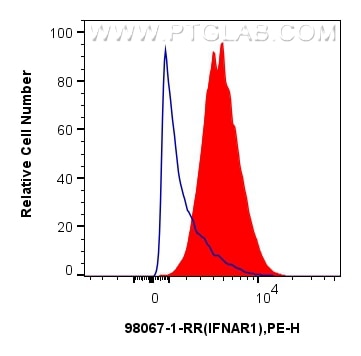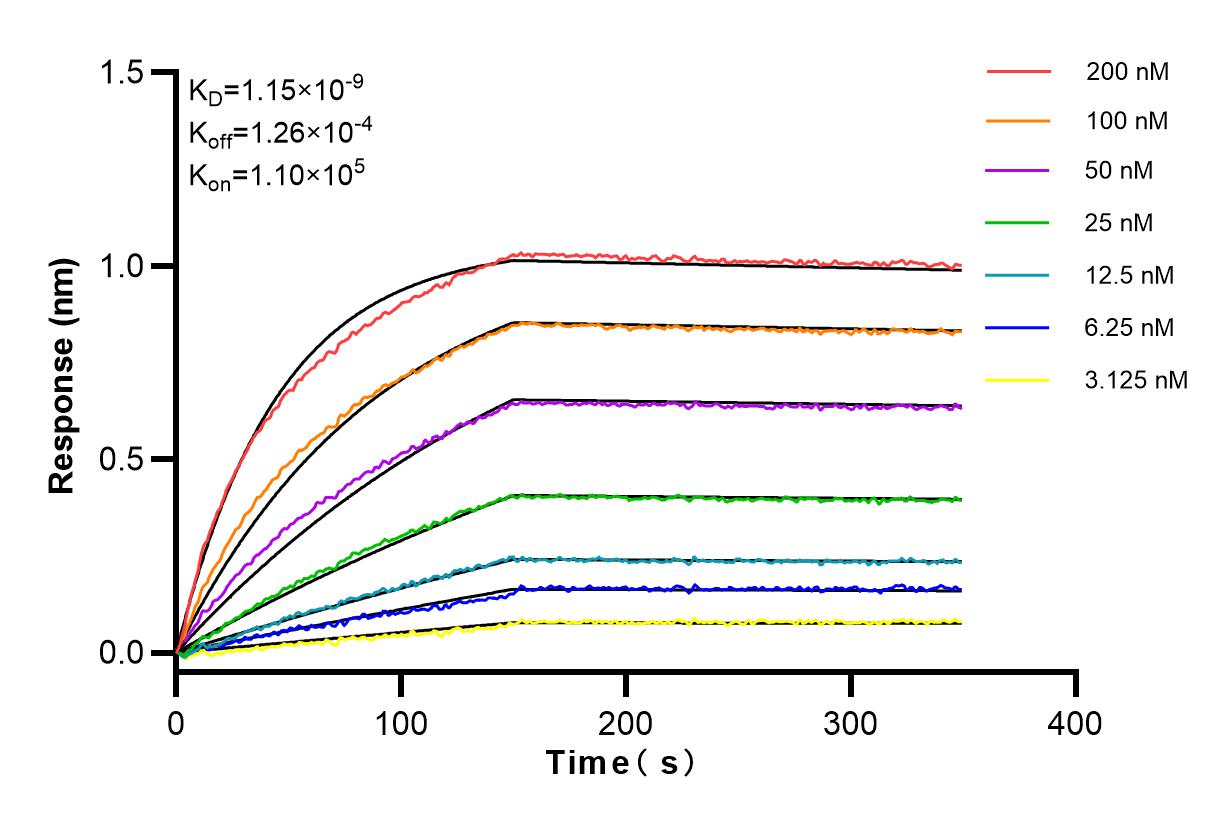Tested Applications
| Positive FC detected in | U-937 cells |
Recommended dilution
| Application | Dilution |
|---|---|
| Flow Cytometry (FC) | FC : 0.25 ug per 10^6 cells in 100 μl suspension |
| This reagent has been tested for flow cytometric analysis. It is recommended that this reagent should be titrated in each testing system to obtain optimal results. | |
| Sample-dependent, Check data in validation data gallery. | |
Product Information
98067-1-RR targets IFNAR1 in FC applications and shows reactivity with human samples.
| Tested Reactivity | human |
| Host / Isotype | Rabbit / IgG |
| Class | Recombinant |
| Type | Antibody |
| Immunogen |
Recombinant protein Predict reactive species |
| Full Name | interferon (alpha, beta and omega) receptor 1 |
| Calculated Molecular Weight | 557 aa, 64 kDa |
| GenBank Accession Number | BC021825 |
| Gene Symbol | IFNAR1 |
| Gene ID (NCBI) | 3454 |
| RRID | AB_3672214 |
| Conjugate | Unconjugated |
| Form | Liquid |
| Purification Method | Protein A purfication |
| UNIPROT ID | P17181 |
| Storage Buffer | PBS with 0.09% sodium azide, pH 7.3. |
| Storage Conditions | Store at 2 - 8°C. Stable for one year after shipment. |
Background Information
Interferon alpha and beta receptor subunit 1 (IFNAR1) is a type I membrane protein that associates with IFNAR2 to form the receptor for type I interferons, including interferons-alpha, -beta, and -lambda. Binding and activation of the receptor stimulates Janus protein kinases, which in turn phosphorylate several proteins, including STAT1 and STAT2, and then increase transcription of the IFN-induced genes whose products exert antiviral, immunomodulatory, and antiproliferative effects.
Protocols
| Product Specific Protocols | |
|---|---|
| FC protocol for IFNAR1 antibody 98067-1-RR | Download protocol |
| Standard Protocols | |
|---|---|
| Click here to view our Standard Protocols |






